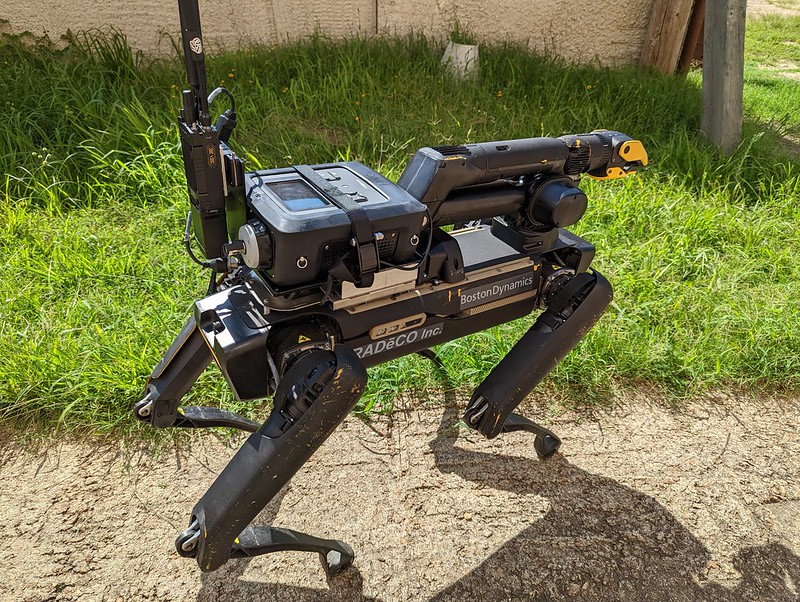Modern Chemical Threats
The increasing probability and risk associated with chemical threats when conducting C-IED missions has necessitated EOD teams to be better equipped to identify these threats. The use of weapons such as the K-51 and RG-Vo chloroacetophenone (riot control) grenades by Russian forces in Ukraine and a recent OPCW report identifying ISIL improvised sulfur mustard (HD) 122mm artillery projectiles attacks in Syria, show an increased propensity for enemies to use chemical weapons. As EOD teams are deployed into similar conflicts, they will inevitably be met with a mission to render safe UXOs or IEDs with a chemical threat present. Similarly, the threat of pharmaceutical-based agents, such as fentanyl and other potent synthetic opioids, pose an equal threat to EOD teams. These pharmaceutical based agents are substantially easier to procure than other traditional, military chemical threats. Kilograms of fentanyl can be procured through the dark web and delivered anywhere in the world and subsequently used in IEDs to create a dispersal of a deadly aerosol.
Stand-off EOD Capabilities
The idea of using stand-off capabilities to extend the reach of soldiers and bomb technicians for clearing mines, IEDs, and UXOs, is not new. Mine Clearing Line Charges (MCLC) can clear a path through a minefield without the need for any Soldiers to clear or mark the locations of mines and robots have been used for many years to investigate IEDs while keeping soldiers and technicians out of harms way. With the growing prevalence of chemical weapons on the battlefield and the elevated concern of use of pharmaceutical based agents, EOD teams will be increasingly asked to respond to UXOs and IEDs which may have a chemical threat present.
Stand-off Chemical Identification
The MX908 is a chemical detection tool capable of identifying explosives, chemical warfare agents, pharmaceutical based agents, and other drugs. United States Army EOD selected the MX908 as part of the Render Safe- Sets, Kits, and Outfits to address the gap in chemical identification for EOD teams. The MX908 is the only device capable of simultaneously identifying vapor chemical targets (traditional chemical warfare agents such as VX, G-Series, or Mustard) and aerosolized targets (low volatility chemical warfare agents such as A-Series agents as well as pharmaceutical based agents).
Image Right: MX908 integrated on a Spot Robot.
(Integrator: RADeCO Inc) provides stand off chemical identification for EOD teams conducting C-IED and UXO missions.

The MX908 can be easily integrated into an unmanned ground vehicle (UGV) to provide standoff chemical identification for EOD teams conducting C-IED or UXO missions where a chemical threat is present or suspected to be present. This allows teams to identify a chemical threat, take necessary precautions, and request additional assets and support as needed based on results.
If a robot is not available, MX908 Beacon, an area monitoring solution for the MX908 which enables longer duration emplacement and remote viewing can be positioned and used to monitor chemical threats from a distance. For example, MX908 Beacon could be placed nearby an IED or artillery shell with a chemical payload and monitored remotely while an EOD technician renders the device safe. This allows the technician to focus on rendering the explosive device safe and enables another technician to monitor the immediate area in the event of a chemical dispersal or leak.
Conclusion
The growing prevalence of chemical threats dispersed from explosive devices makes chemical identification a critical task of EOD teams. Devices such as the MX908, which can monitor for vapor and aerosol threat simultaneously, provide maximum coverage for traditional chemical warfare agents and more advanced threats such as A-series agents/Novichoks and pharmaceutical based agents.
References
- https://www.businessinsider.com/russia-admits-to-using-tear-gas-chemical-weapons-on-ukrainian-troops-2023-12#
- https://www.forbes.com/sites/davidhambling/2023/12/29/what-we-know-about-russian-chemical-weapon-attacks/?sh=38a7f72a5545
- https://www.opcw.org/media-centre/news/2024/02/opcw-identifies-isil-perpetrators-2015-chemical-attack-marea-syria